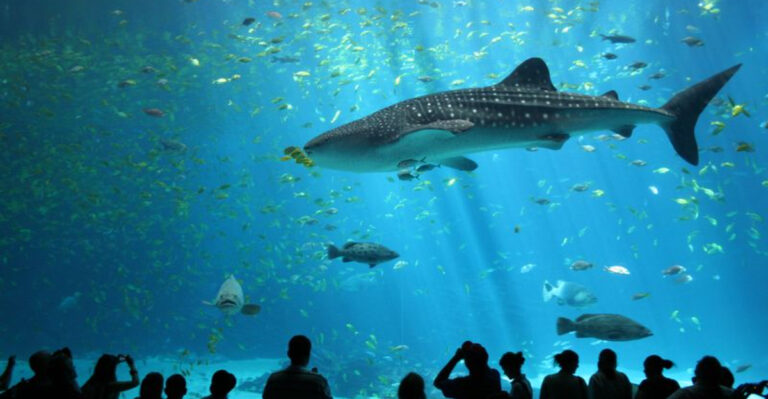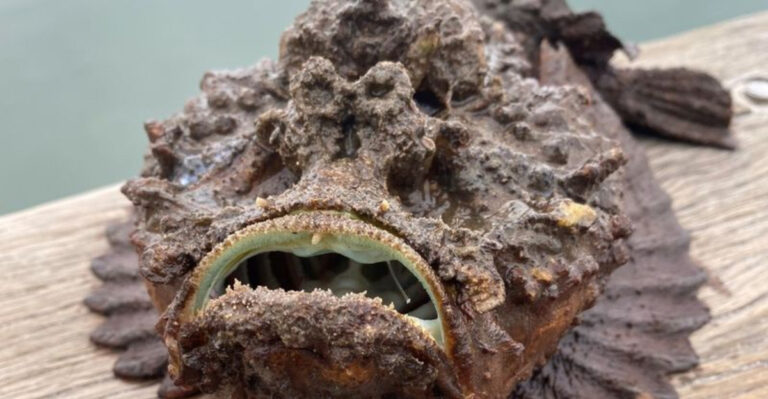12 Fascinating Heron Species And The Best Places To Spot Them

Herons are elegant water birds with long legs, necks, and dagger-like bills that make them incredible hunters in wetland ecosystems worldwide.
These graceful creatures come in various sizes and colors, from the snow-white egrets to the blue-gray giants that patrol shorelines with patient precision.
Whether you’re an experienced birder or just appreciate wildlife, discovering these magnificent birds in their natural habitats can be a truly magical experience.
1. Great Blue Heron – North America’s Majestic Giant

Standing nearly four feet tall with a wingspan of six feet, the Great Blue Heron commands attention along waterways across North America. These prehistoric-looking birds hunt with remarkable patience, standing motionless in shallow water before striking with lightning speed to spear fish.
The Everglades National Park in Florida offers prime viewing opportunities year-round, where hundreds gather during breeding season. Point Reyes National Seashore in California provides another spectacular location to observe these birds hunting among tidal pools and marshlands.
Despite their size, Great Blues can fly with surprising grace, tucking their long necks into an S-shape during flight.
2. Snowy Egret – The Dancing White Beauty
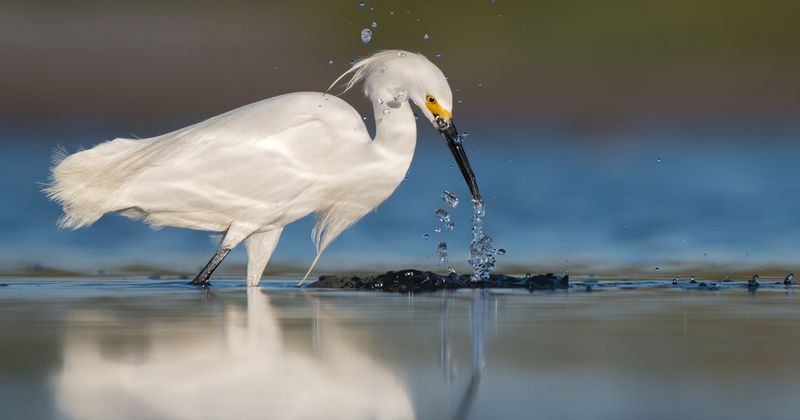
With brilliant white plumage and distinctive yellow feet that look like they’ve been dipped in gold paint, Snowy Egrets are among the most recognizable wading birds. Once hunted nearly to extinction for their delicate breeding plumes, these birds have made a remarkable comeback thanks to conservation efforts.
Famous for their animated hunting style, Snowies often shuffle their bright yellow feet to stir up prey before darting their bills into the water. Chincoteague National Wildlife Refuge in Virginia offers excellent viewing opportunities, especially during spring migration.
These social birds typically nest in large colonies alongside other heron species.
3. Black-crowned Night Heron – The Twilight Hunter
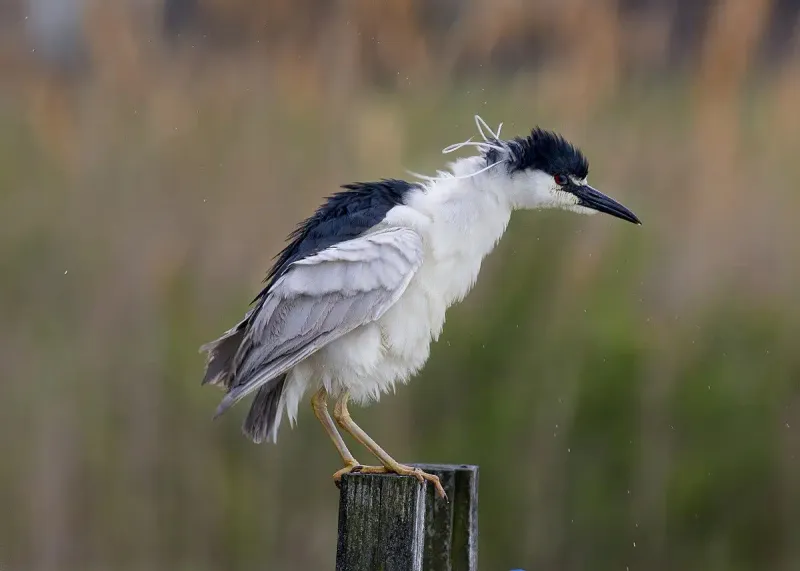
Unlike most herons, these stocky birds with red eyes come alive as the sun sets. Black-crowned Night Herons have a distinctive appearance with black caps and backs contrasting against gray wings and white underparts. Their short necks and hunched posture give them a somewhat mysterious profile in the dimming light.
Jamaica Bay Wildlife Refuge in New York provides excellent opportunities to spot these nocturnal hunters during evening hours. San Francisco Bay’s wetlands host large populations year-round, with peak activity occurring just after sunset.
These social birds often nest in large colonies, sometimes containing hundreds of pairs, creating quite a spectacle during breeding season.
4. Reddish Egret – The Coastal Comedian
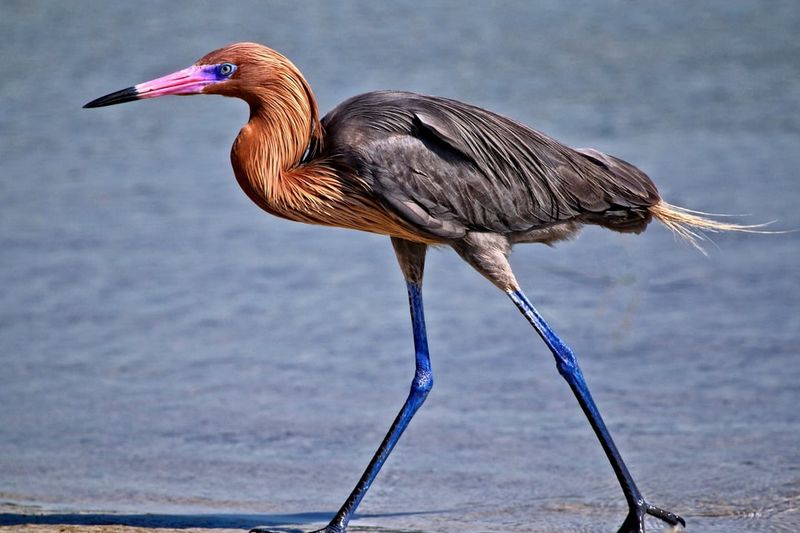
Known for perhaps the most entertaining hunting style of any heron, Reddish Egrets perform what birders affectionately call the “drunken sailor dance.” These coastal specialists sprint through shallow water with wings spread wide, creating shadows that attract small fish before stabbing precisely with their bills.
Laguna Atascosa National Wildlife Refuge in Texas offers prime viewing of these charismatic birds. The Florida Keys also provide excellent opportunities, particularly at Ding Darling National Wildlife Refuge on Sanibel Island.
Reddish Egrets come in two distinct color morphs – a rusty-headed dark form and an all-white version – sometimes seen hunting side by side.
5. Green Heron – The Clever Tool-User

Among the few animals documented using tools in the wild, Green Herons drop insects, bread crusts, or feathers onto water surfaces as bait to attract fish. These compact herons with chestnut bodies and greenish backs are masters of camouflage, often freezing motionless among reeds.
Huntley Meadows Park in Virginia offers excellent viewing opportunities along its boardwalk trails. The wetlands of Corkscrew Swamp Sanctuary in Florida provide another prime location to witness their remarkable fishing techniques.
Despite their small size (only 18 inches tall), Green Herons have surprisingly loud calls that echo across marshes, betraying their otherwise secretive presence.
6. Purple Heron – Europe’s Elusive Reed-Dweller
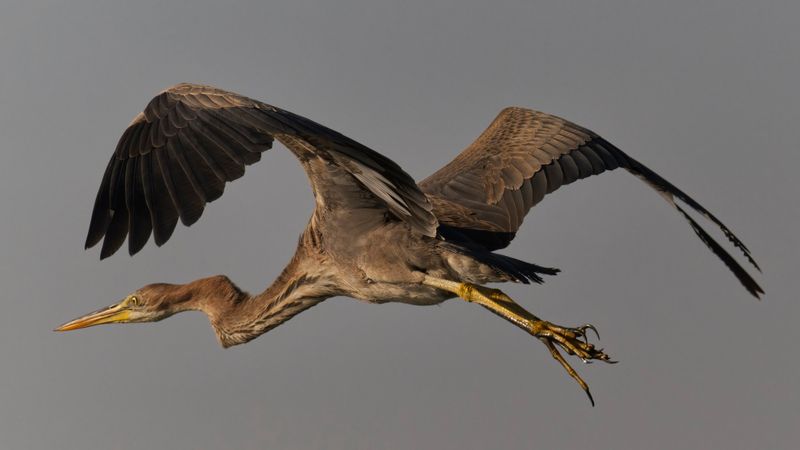
With its slender purple-maroon neck and distinctive stealth, the Purple Heron masters the art of vanishing among dense reedbeds. Slightly smaller than the Grey Heron but with a more vibrant palette, these birds slip through vegetation with remarkable agility, rarely exposing themselves in open water.
Spain’s Doñana National Park hosts substantial breeding populations, offering spring visitors glimpses of their elaborate courtship displays. The Camargue region in southern France provides another hotspot, particularly in its extensive marshlands where dozens gather to nest.
Purple Herons undertake impressive migrations, with European birds crossing the Sahara Desert to reach African wintering grounds.
7. Little Egret – The Global Colonizer
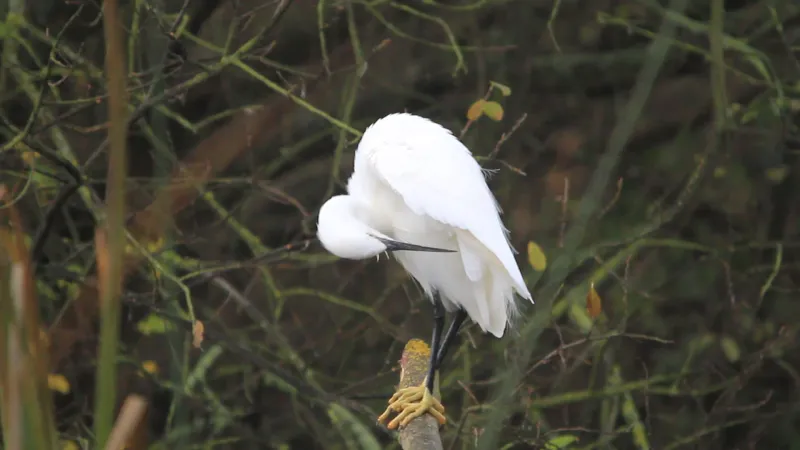
Once restricted to southern Europe, Africa and Asia, Little Egrets have dramatically expanded their range northward in recent decades, colonizing new territories with remarkable success. These medium-sized white herons sport distinctive black legs with contrasting yellow feet, along with two elegant head plumes during breeding season.
The Somerset Levels in England offer excellent viewing opportunities of this recent British colonizer. Portugal’s Tagus Estuary Nature Reserve hosts thousands during migration periods, creating spectacular gatherings against sunset skies.
Little Egrets employ a fascinating hunting technique called “foot-stirring,” rapidly vibrating their bright yellow feet to flush out prey from muddy bottoms.
8. Goliath Heron – Africa’s Waterside Giant
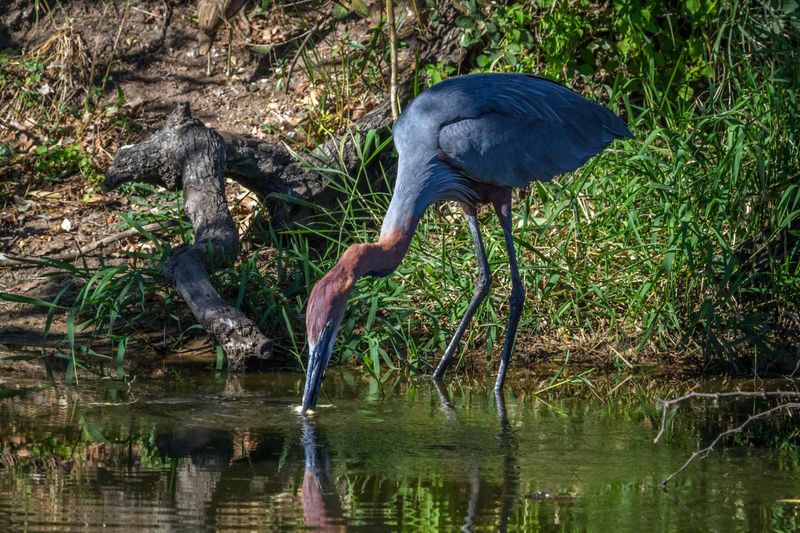
Living up to its biblical name, the Goliath Heron stands as the world’s largest heron, towering at nearly five feet tall. These magnificent birds sport slate-gray wings, chestnut heads, and distinctive black-and-white striped throats that make them unmistakable along African waterways.
Botswana’s Okavango Delta provides unparalleled viewing opportunities, especially by boat where you might approach within yards of fishing Goliaths. Lake Naivasha in Kenya offers another reliable location to spot these giants stalking through shallow waters.
Despite their imposing size, Goliath Herons are surprisingly shy and will take flight if approached too closely by humans.
9. Japanese Crested Ibis – The Sacred Comeback Kid
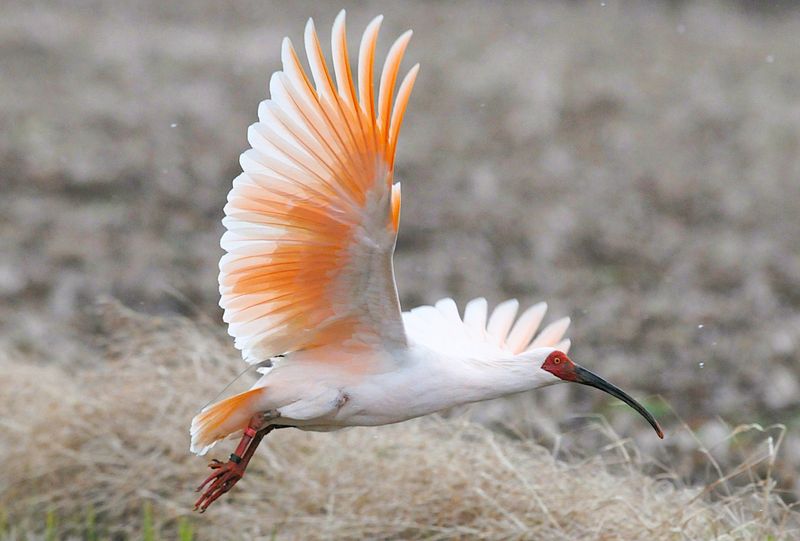
With its distinctive pink plumage and crescent-shaped crest, the Japanese Crested Ibis once faced extinction with only a handful of birds remaining in the wild. Thanks to intensive conservation efforts and breeding programs, these sacred birds are making a gradual comeback in their native Japan.
Sado Island off Japan’s northwest coast offers the best chance to spot these rare birds, where a reintroduction program has established a small but growing population. Special viewing platforms allow visitors to observe them feeding in rice paddies.
Culturally significant in Japan, these birds appear in traditional artwork and were once considered divine messengers bringing good fortune.
10. Boat-billed Heron – Central America’s Nocturnal Oddity
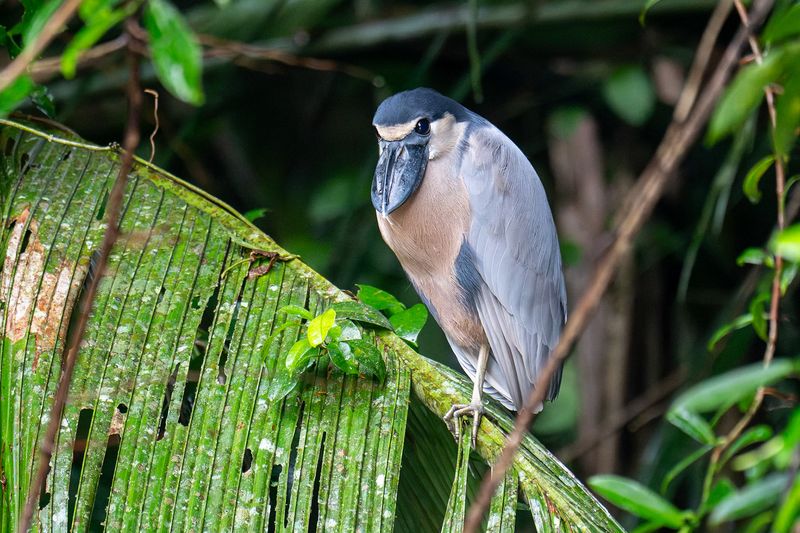
Sporting what looks like an upside-down boat on its face, the Boat-billed Heron stands out among its relatives with its comically oversized bill. These nocturnal hunters emerge at dusk along mangrove-lined waterways throughout Central and South America, using their specialized bills to scoop up fish and crustaceans.
Costa Rica’s Tortuguero National Park offers excellent night boat tours where guides spotlight these bizarre birds. Belize’s Crooked Tree Wildlife Sanctuary provides another reliable location, especially during the dry season when birds concentrate around remaining water sources.
During the day, Boat-bills roost in dense vegetation, their massive bills tucked against their bodies as they sleep.
11. Tricolored Heron – The Nimble Shoreline Acrobat
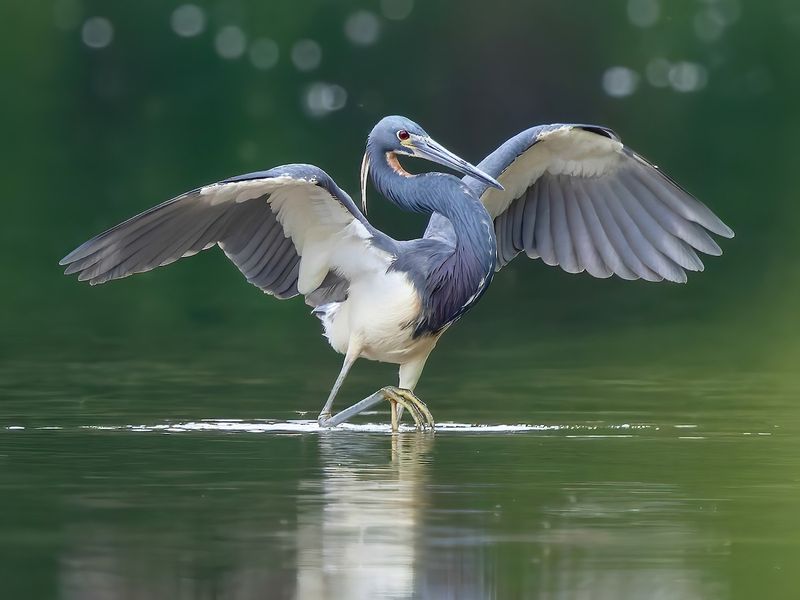
Formerly known as the Louisiana Heron, these slender birds display a striking combination of slate-blue back, white belly, and rusty neck that creates their namesake three-color pattern. More active than many heron species, Tricolored Herons dash about in shallow water, frequently changing positions and employing acrobatic moves to catch small fish.
Florida’s Merritt Island National Wildlife Refuge hosts large numbers year-round. Louisiana’s coastal marshes, particularly in the Jean Lafitte National Historical Park, provide another excellent viewing location during breeding season.
Their elaborate courtship displays involve stretching their necks skyward while raising and lowering specialized plumes – a spectacular sight in spring.
12. Yellow-crowned Night Heron – The Crab Specialist
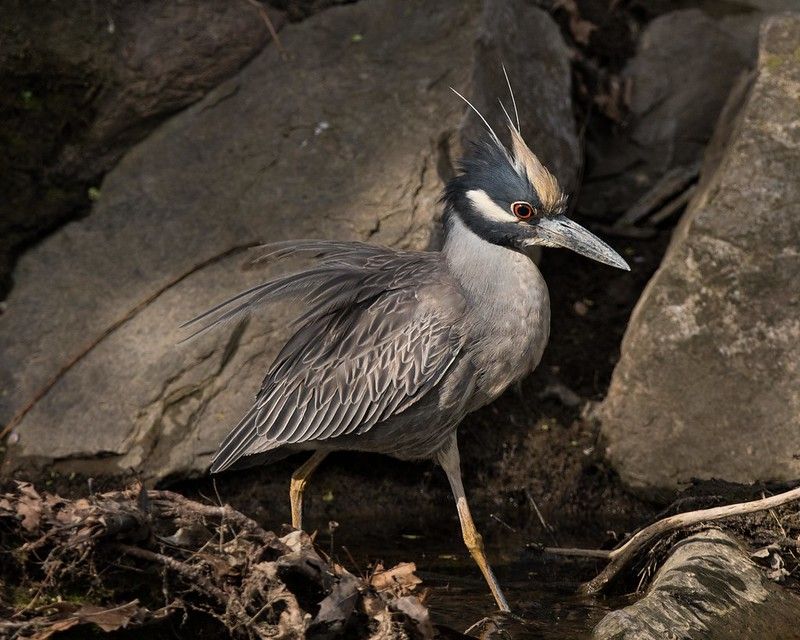
With a distinctive yellow crown contrasting against its otherwise gray plumage, these stocky herons specialize in hunting crustaceans rather than fish. Their powerful bills make short work of crab shells – sometimes you can hear the cracking sound from yards away as they feast.
Assateague Island National Seashore along the Maryland/Virginia coast offers excellent viewing opportunities during the summer months. Jekyll Island in Georgia provides year-round observation possibilities, especially along the island’s famous Driftwood Beach.
Unlike many herons that nest in large colonies, Yellow-crowned Night Herons often nest in small groups or even solitary pairs, making their nests less conspicuous but no less intricate.




